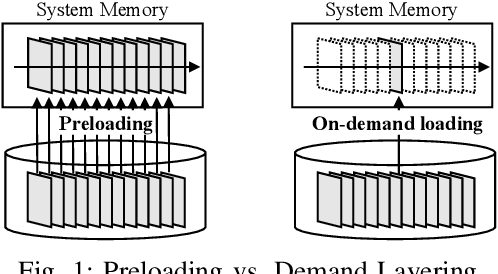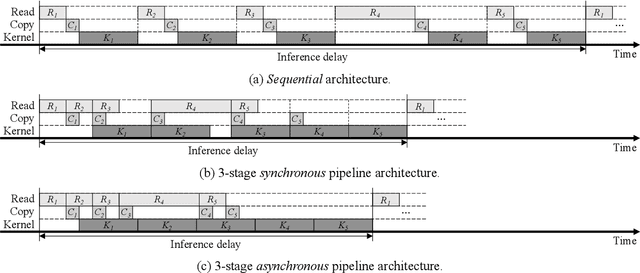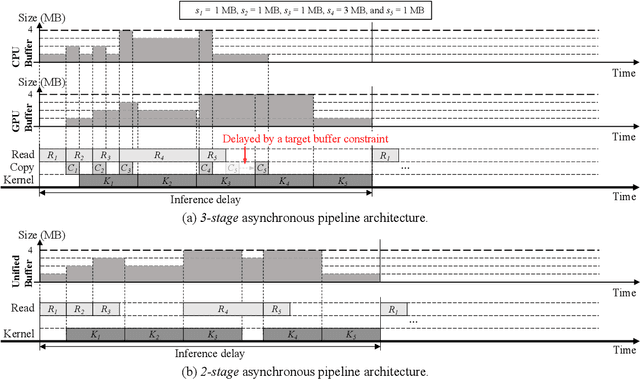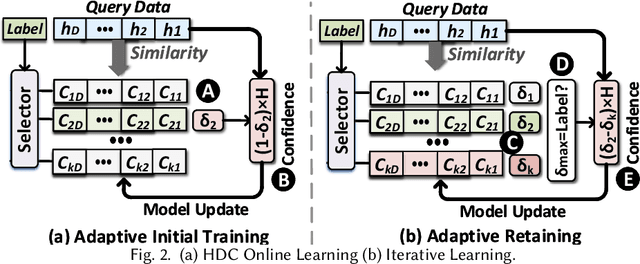Nikil Dutt
Department of Computer Science, University of California, Irvine
DEMENTIA-PLAN: An Agent-Based Framework for Multi-Knowledge Graph Retrieval-Augmented Generation in Dementia Care
Mar 26, 2025Abstract:Mild-stage dementia patients primarily experience two critical symptoms: severe memory loss and emotional instability. To address these challenges, we propose DEMENTIA-PLAN, an innovative retrieval-augmented generation framework that leverages large language models to enhance conversational support. Our model employs a multiple knowledge graph architecture, integrating various dimensional knowledge representations including daily routine graphs and life memory graphs. Through this multi-graph architecture, DEMENTIA-PLAN comprehensively addresses both immediate care needs and facilitates deeper emotional resonance through personal memories, helping stabilize patient mood while providing reliable memory support. Our notable innovation is the self-reflection planning agent, which systematically coordinates knowledge retrieval and semantic integration across multiple knowledge graphs, while scoring retrieved content from daily routine and life memory graphs to dynamically adjust their retrieval weights for optimized response generation. DEMENTIA-PLAN represents a significant advancement in the clinical application of large language models for dementia care, bridging the gap between AI tools and caregivers interventions.
Enhancing Performance and User Engagement in Everyday Stress Monitoring: A Context-Aware Active Reinforcement Learning Approach
Jul 11, 2024



Abstract:In today's fast-paced world, accurately monitoring stress levels is crucial. Sensor-based stress monitoring systems often need large datasets for training effective models. However, individual-specific models are necessary for personalized and interactive scenarios. Traditional methods like Ecological Momentary Assessments (EMAs) assess stress but struggle with efficient data collection without burdening users. The challenge is to timely send EMAs, especially during stress, balancing monitoring efficiency and user convenience. This paper introduces a novel context-aware active reinforcement learning (RL) algorithm for enhanced stress detection using Photoplethysmography (PPG) data from smartwatches and contextual data from smartphones. Our approach dynamically selects optimal times for deploying EMAs, utilizing the user's immediate context to maximize label accuracy and minimize intrusiveness. Initially, the study was executed in an offline environment to refine the label collection process, aiming to increase accuracy while reducing user burden. Later, we integrated a real-time label collection mechanism, transitioning to an online methodology. This shift resulted in an 11% improvement in stress detection efficiency. Incorporating contextual data improved model accuracy by 4%. Personalization studies indicated a 10% enhancement in AUC-ROC scores, demonstrating better stress level differentiation. This research marks a significant move towards personalized, context-driven real-time stress monitoring methods.
MUSIC-lite: Efficient MUSIC using Approximate Computing: An OFDM Radar Case Study
Jul 05, 2024Abstract:Multiple Signal Classification (MUSIC) is a widely used Direction of Arrival (DoA)/Angle of Arrival (AoA) estimation algorithm applied to various application domains such as autonomous driving, medical imaging, and astronomy. However, MUSIC is computationally expensive and challenging to implement in low-power hardware, requiring exploration of trade-offs between accuracy, cost, and power. We present MUSIC-lite, which exploits approximate computing to generate a design space exploring accuracy-area-power trade-offs. This is specifically applied to the computationally intensive singular value decomposition (SVD) component of the MUSIC algorithm in an orthogonal frequency-division multiplexing (OFDM) radar use case. MUSIC-lite incorporates approximate adders into the iterative CORDIC algorithm that is used for hardware implementation of MUSIC, generating interesting accuracy-area-power trade-offs. Our experiments demonstrate MUSIC-lite's ability to save an average of 17.25% on-chip area and 19.4% power with a minimal 0.14% error for efficient MUSIC implementations.
Integrating Wearable Sensor Data and Self-reported Diaries for Personalized Affect Forecasting
Mar 23, 2024



Abstract:Emotional states, as indicators of affect, are pivotal to overall health, making their accurate prediction before onset crucial. Current studies are primarily centered on immediate short-term affect detection using data from wearable and mobile devices. These studies typically focus on objective sensory measures, often neglecting other forms of self-reported information like diaries and notes. In this paper, we propose a multimodal deep learning model for affect status forecasting. This model combines a transformer encoder with a pre-trained language model, facilitating the integrated analysis of objective metrics and self-reported diaries. To validate our model, we conduct a longitudinal study, enrolling college students and monitoring them over a year, to collect an extensive dataset including physiological, environmental, sleep, metabolic, and physical activity parameters, alongside open-ended textual diaries provided by the participants. Our results demonstrate that the proposed model achieves predictive accuracy of 82.50% for positive affect and 82.76% for negative affect, a full week in advance. The effectiveness of our model is further elevated by its explainability.
Reducing Intraspecies and Interspecies Covariate Shift in Traumatic Brain Injury EEG of Humans and Mice Using Transfer Euclidean Alignment
Oct 03, 2023



Abstract:While analytics of sleep electroencephalography (EEG) holds certain advantages over other methods in clinical applications, high variability across subjects poses a significant challenge when it comes to deploying machine learning models for classification tasks in the real world. In such instances, machine learning models that exhibit exceptional performance on a specific dataset may not necessarily demonstrate similar proficiency when applied to a distinct dataset for the same task. The scarcity of high-quality biomedical data further compounds this challenge, making it difficult to evaluate the model's generality comprehensively. In this paper, we introduce Transfer Euclidean Alignment - a transfer learning technique to tackle the problem of the dearth of human biomedical data for training deep learning models. We tested the robustness of this transfer learning technique on various rule-based classical machine learning models as well as the EEGNet-based deep learning model by evaluating on different datasets, including human and mouse data in a binary classification task of detecting individuals with versus without traumatic brain injury (TBI). By demonstrating notable improvements with an average increase of 14.42% for intraspecies datasets and 5.53% for interspecies datasets, our findings underscore the importance of the use of transfer learning to improve the performance of machine learning and deep learning models when using diverse datasets for training.
Active Reinforcement Learning for Personalized Stress Monitoring in Everyday Settings
Apr 28, 2023



Abstract:Most existing sensor-based monitoring frameworks presume that a large available labeled dataset is processed to train accurate detection models. However, in settings where personalization is necessary at deployment time to fine-tune the model, a person-specific dataset needs to be collected online by interacting with the users. Optimizing the collection of labels in such phase is instrumental to impose a tolerable burden on the users while maximizing personal improvement. In this paper, we consider a fine-grain stress detection problem based on wearable sensors targeting everyday settings, and propose a novel context-aware active learning strategy capable of jointly maximizing the meaningfulness of the signal samples we request the user to label and the response rate. We develop a multilayered sensor-edge-cloud platform to periodically capture physiological signals and process them in real-time, as well as to collect labels and retrain the detection model. We collect a large dataset and show that the context-aware active learning technique we propose achieves a desirable detection performance using 88\% and 32\% fewer queries from users compared to a randomized strategy and a traditional active learning strategy, respectively.
Demand Layering for Real-Time DNN Inference with Minimized Memory Usage
Oct 08, 2022



Abstract:When executing a deep neural network (DNN), its model parameters are loaded into GPU memory before execution, incurring a significant GPU memory burden. There are studies that reduce GPU memory usage by exploiting CPU memory as a swap device. However, this approach is not applicable in most embedded systems with integrated GPUs where CPU and GPU share a common memory. In this regard, we present Demand Layering, which employs a fast solid-state drive (SSD) as a co-running partner of a GPU and exploits the layer-by-layer execution of DNNs. In our approach, a DNN is loaded and executed in a layer-by-layer manner, minimizing the memory usage to the order of a single layer. Also, we developed a pipeline architecture that hides most additional delays caused by the interleaved parameter loadings alongside layer executions. Our implementation shows a 96.5% memory reduction with just 14.8% delay overhead on average for representative DNNs. Furthermore, by exploiting the memory-delay tradeoff, near-zero delay overhead (under 1 ms) can be achieved with a slightly increased memory usage (still an 88.4% reduction), showing the great potential of Demand Layering.
Edge-centric Optimization of Multi-modal ML-driven eHealth Applications
Aug 04, 2022



Abstract:Smart eHealth applications deliver personalized and preventive digital healthcare services to clients through remote sensing, continuous monitoring, and data analytics. Smart eHealth applications sense input data from multiple modalities, transmit the data to edge and/or cloud nodes, and process the data with compute intensive machine learning (ML) algorithms. Run-time variations with continuous stream of noisy input data, unreliable network connection, computational requirements of ML algorithms, and choice of compute placement among sensor-edge-cloud layers affect the efficiency of ML-driven eHealth applications. In this chapter, we present edge-centric techniques for optimized compute placement, exploration of accuracy-performance trade-offs, and cross-layered sense-compute co-optimization for ML-driven eHealth applications. We demonstrate the practical use cases of smart eHealth applications in everyday settings, through a sensor-edge-cloud framework for an objective pain assessment case study.
Efficient Personalized Learning for Wearable Health Applications using HyperDimensional Computing
Aug 01, 2022



Abstract:Health monitoring applications increasingly rely on machine learning techniques to learn end-user physiological and behavioral patterns in everyday settings. Considering the significant role of wearable devices in monitoring human body parameters, on-device learning can be utilized to build personalized models for behavioral and physiological patterns, and provide data privacy for users at the same time. However, resource constraints on most of these wearable devices prevent the ability to perform online learning on them. To address this issue, it is required to rethink the machine learning models from the algorithmic perspective to be suitable to run on wearable devices. Hyperdimensional computing (HDC) offers a well-suited on-device learning solution for resource-constrained devices and provides support for privacy-preserving personalization. Our HDC-based method offers flexibility, high efficiency, resilience, and performance while enabling on-device personalization and privacy protection. We evaluate the efficacy of our approach using three case studies and show that our system improves the energy efficiency of training by up to $45.8\times$ compared with the state-of-the-art Deep Neural Network (DNN) algorithms while offering a comparable accuracy.
Hybrid Learning for Orchestrating Deep Learning Inference in Multi-user Edge-cloud Networks
Feb 21, 2022



Abstract:Deep-learning-based intelligent services have become prevalent in cyber-physical applications including smart cities and health-care. Collaborative end-edge-cloud computing for deep learning provides a range of performance and efficiency that can address application requirements through computation offloading. The decision to offload computation is a communication-computation co-optimization problem that varies with both system parameters (e.g., network condition) and workload characteristics (e.g., inputs). Identifying optimal orchestration considering the cross-layer opportunities and requirements in the face of varying system dynamics is a challenging multi-dimensional problem. While Reinforcement Learning (RL) approaches have been proposed earlier, they suffer from a large number of trial-and-errors during the learning process resulting in excessive time and resource consumption. We present a Hybrid Learning orchestration framework that reduces the number of interactions with the system environment by combining model-based and model-free reinforcement learning. Our Deep Learning inference orchestration strategy employs reinforcement learning to find the optimal orchestration policy. Furthermore, we deploy Hybrid Learning (HL) to accelerate the RL learning process and reduce the number of direct samplings. We demonstrate efficacy of our HL strategy through experimental comparison with state-of-the-art RL-based inference orchestration, demonstrating that our HL strategy accelerates the learning process by up to 166.6x.
 Add to Chrome
Add to Chrome Add to Firefox
Add to Firefox Add to Edge
Add to Edge